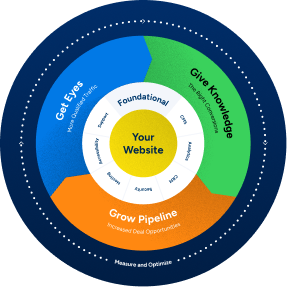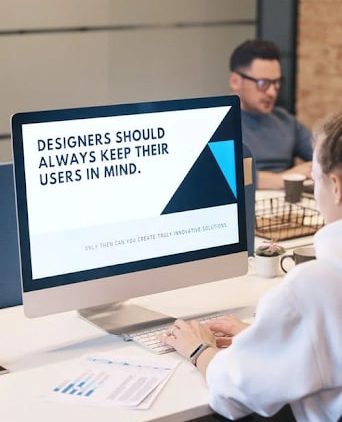It may seem obvious that it is necessary to consider the experience of your audience when designing a website, yet too many sites fail at this very basic task. Professionals at Boston web design companies know that user experience (UX) and user interface (UI) must be top priorities when constructing or updating any type of website. Gain a basic understanding of these two crucial concepts before beginning a website development project for your business. GoingClear is here to help you increase your UX/UI web design!
Discover what results you can expect from web development in Boston.
Are UX And UI The Same Thing?
UX and UI are sometimes used interchangeably, yet they are far from the same thing. The two concepts are closely related and thus may be discussed in similar contexts, but there are some very basic differences between the two.
What Is User Experience Design (UX)?
In the late 1990s, cognitive scientist Norman first used the term User Experience to describe “all aspects of the end-users interaction with the company, its services, and its products.” The term was subsequently applied to the technology industry to discuss how website development and other digital formats must be designed with the end-user in mind at all steps of the journey. Above all else, a UX designer considers how every bit of technology will be received by the user and how each element will affect the user’s overall interaction with and perception of the brand and its products and services.
What Is User Interface Design (UI)?
Unlike UX, User Interface Design is a strictly digital term that refers to the physical point of interaction between the user and the device or product they are using. Smartphone touchscreens or touchpads used on appliances are commonly encountered user interfaces. The UI designer focuses on ensuring that a product is intuitive by considering how it looks and how the user encounters each icon, button, color scheme, font, and other physical features that will be directly interacted with. The goal of UI design is to create an interface that allows the user direct access to the brand’s strengths and messages.
What Is The Difference Between UI And UX Web Design?
This question is a bit trickier since neither of the above has universally accepted definitions. The best way to think about UI vs. UX is that UI is simply one component, the outside, and results, while UX is the larger sum of all the parts. Both UX and UI are crucial components that cannot exist without the other, but each is a separate task. A UI designer need not have strong UX skills and vice versa.
UI is the look while UX is the feel of the same product. A UX designer wants the user to have the best overall experience possible, so they will usually focus on identifying the potential problems a user will face and then removing those obstacles one at a time until the experience is optimized. A UX designer must understand everything they can about the targeted users. They must identify who those users are, how they will use the products, what their pain points are and what they expect to get out of their experience. After extensive research to find the answers to all of these questions, the UX designer maps out all of the features the user will need to meet their goals into an outline for the product.
With a blueprint of sorts in place, the UI designer then steps in to create a finished product that looks good and works well from the user’s end. This entails extreme attention to detail. UI must consider every single thing the user will see and touch. Everything on a screen, the buttons, and how it all looks together are all concerns at this stage of development. Though UI does focus on the exterior of the product, it is not superficial by any means. UI design is what will determine how accessible a product is and whether users get any value out of it. It is up to the UI designer to bring all the plans of UX to life.
How Do UI And UX Work Together?
The most important thing to understand about UI and UX is that neither can exist without the other. A beautiful product that does not solve any problems or work properly is useless. A highly functional product that is unattractive to users will never get the opportunity to demonstrate its worth. In practice, the UX designer and the UI designer have very different roles when developing the final product.
UX designers must truly know what the gaps are that their product seeks to fill. They perform analysis on any competitors of the product they intend to create, noting where other existing products fall short in hopes of doing better. The research stage also includes a study of the users who will be interacting with the product. The UX designer must put themselves inside the minds of future users, anticipating not only their needs but also their motivation so they can determine what might encourage a user to develop a preference for their product over the competition. UX designers must set aside their own experiences and biases to create a product that works well for their intended audience instead of just for themselves.
Armed with strong research, the UX designer then creates the wireframe and prototype, fully expecting this to be amended several times before the final design of the product is reached. The design is then tested on users and in simulations, and the UX and UI designers must work together at this point to begin setting the closing details into place. The UI designer also does research, but this segment is more concerned with branding and graphics and the visual effect of the product on the user. The UI designer also considers the user manuals that make the products accessible to audiences. A prototype is then created which reflects interactivity and adaptation to different devices if necessary. Though each member of the team has their responsibilities, collaboration and flexibility are necessary to create a flawless finished product.
Get Help Increasing Your UX/UI Web Design From Boston Companies
A good digital product has many moving parts. GoingClear helps brands to showcase the best they have to offer through optimized usability. Get a quote today to see how we can help your brand move in the right direction.

